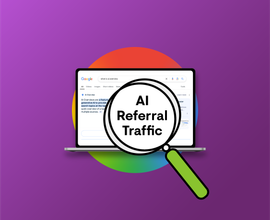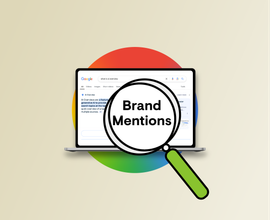How Leading Brands Leverage Real-Time Marketing Successfully
Everything you need to know about real-time marketing to add agility and authentic engagement to your SEO efforts.
Successful marketing today is measured by agility. In the past, traditional marketing relied on pre-planned campaigns that left no room for adapting to current trends or connecting with customers on the topics that matter to them in the moment. That approach no longer works. Instead, the ability to adapt in real-time is now a core differentiator when it comes to earning the attention of your audience in the oversaturated online world. This is why today’s most successful marketers are incorporating real-time marketing (RTM) into their strategy as a way to proactively react to current trends and topics with timely content that resonates with consumers. It's fast, it's agile, and it's highly effective when done well.
Effective organic marketing has transitioned away from carefully curated annual campaigns built well in advance to hundreds of micro-campaigns that overcome past obstacles preventing agility and adapting at scale. But the focus has to be on unlocking agility without sacrificing overall quality. With the proper understanding and implementation, RTM can help your business reach more customers and enhance engagement and brand awareness while improving ROI. To learn what real-time marketing is and how you can successfully incorporate it into your marketing strategy, check out these best practices and explore successful examples from today's leading brands.
What is real-time marketing?
As its name suggests, real-time marketing is all about reacting in real-time to the needs of your audience and deploying campaigns that meet those needs at that moment. Instead of a more traditional marketing approach where resources are dedicated primarily to the planning stage, and, as a result, campaigns take a long time to roll out and thus fail to meet the needs of the customer, RTM allows you to capitalize on and contribute to current events, trending topics, and conversations relevant to your brand.
That is not to say there is no preliminary work involved. In fact, being prepared with real-time marketing data allows the quick reaction and implementation that RTM needs. But, the power of marketing in real-time is all about reacting with agility and creatively making the most of each opportunity that presents itself. This can mean quickly responding to customer engagement on social media, taking advantage of big moments in pop culture with timely content, or joining in on an emerging trend as it takes off. Whether it's reacting to what's going on in the world or your particular industry, real-time marketing is about capturing attention and ensuring that your brand is part of the most important current conversations.
Why real-time marketing is successful
Real-time marketing is incredibly powerful because it lays the groundwork for businesses to capitalize on trending topics and discussions in an authentic, meaningful way while increasing visibility and reach. When done correctly, RTM has been proven to improve SEO, boost brand awareness, strengthen engagement, expand audience reach/fanbase, and increase sales.
Because online trends move quickly and the digital market is so heavily saturated, marketers can find it challenging to reach their audience. However, RTM is ideal for connecting with consumers by breaching traditional ad space and interacting directly. This allows marketers to cut through the digital noise and provide personalized experiences that speak to an individual's interests and needs. In a marketing landscape where users are incredibly savvy, personalization lets you stand out and connect with your audience in a way that acknowledges them as people and not just customers. Not only does this make your interactions more authentic and helpful, but, as you will see, the right messaging can also become a viral sensation, creating real and lasting brand exposure.
Since SERPs prioritize current, helpful, and relevant information, using real-time marketing to identify and act on trending topics allows you to make content that people need when they need it. Using tools like Google TrendsGoogle Trends
With Google Trends the interest in relevant search terms can be analyzed. This allows search queries to be valued and, over the course of time, such as for the seasonality of search terms, be classified.
Learn more to identify popular real-time topics allows you to capitalize on current market demands. Knowing what people are interested in helps you find the best platforms to use, the right influencers to engage with, and reach your audience with the most impactful hashtags and keywords.
Additionally, even the best targeted ads are still based on anticipating a customer's interests. There is always the risk of miscalculation or incorrect predictions. With RTM, you can confidently address the real-time needs of your audience and provide them with incredibly relevant content. Yes, it is still marketing, but it acts much more like a conversation, showing your brand as contemporary, thoughtful, and valuable.
While taking advantage of RTM opportunities requires a different mindset and approach from traditional and enterprise marketing, the results are well worth the effort.
Real-time marketing examples from leading brands
The best way to see how RTM works and why it's so successful is by seeing some real-time marketing examples in action.
Coca-Cola’s “Real Magic at Christmas” Santa Claus + Cameo campaign
Effective real-time marketing capitalizes on current events or trends and is all about meeting your customer at the moment. Coca-Cola’s “Real Magic at Christmas ” campaign did exactly that. Given COVID-19’s Omicron variant concerns during the fall and winter of 2021, Coca-Cola recognized that many families might not feel comfortable returning to their annual holiday mall trip to get photos with Santa—dashing hopes that the holiday season might resemble something closer to pre-pandemic times. Since Santa Claus has been a central figure of Coca-Cola’s holiday marketing since the 1920s, they saw an opportunity.
The brand partnered with Cameo—an online fan connection platform where fans can request personalized videos from celebrities—to allow consumers the chance to request a custom holiday greeting from Santa Claus himself. The creative and timely message was incredibly well-received and helped families create a meaningful memory with their kids during the holiday season, despite ongoing COVID uncertainty. The Real Magic campaign is a perfect example of identifying a consumer need in real-time, reacting quickly, and implementing personalization at scale.
Peloton’s “And Just Like That” feature and response
When the highly anticipated follow-up series to "Sex and the City" featured a Peloton bike in its first episode, it was not exactly what the company expected. In a climactic and widely shared moment, the character played by Chris Noth took a ride on his Peloton and *spoiler alert* suffered a tragic heart attack. After the episode aired, Peloton faced a growing PR challenge that continued to snowball after a significant hit to their stock value following missed sales goals and news of an impending buyout.
These issues, whether they are PR or marketing related, can happen to anyone, and they can rarely be anticipated. The best way to respond is by taking quick action and attempting to control the story as it plays out in real-time. And that is exactly what Peloton did . Within 48 hours of the episode airing, an ad was created featuring Noth and the fitness instructor from the episode, showing them quite happy and ready "to take another ride" on the Peloton beside them. The ad proved massively successful, adding $900 million in stock value for Peloton and becoming part of the episode's story and the cultural conversation surrounding it. Not only did Peloton use a real-time response to rewrite the narrative of an unfortunate feature, but they created something else entirely—a new story for people to talk about, share, and ultimately build brand awareness around.
But, the story did not end there. Not long after the ad was released, Noth became embroiled in an assault allegation that once again turned the tides regarding his association with Peloton. Forced again to react to a mounting PR predicament, Peloton decided to drop the ad and release a statement ensuring that they were unaware of the allegations when they chose to feature Noth. This fall-out is a good way to understand the pros and cons of real-time marketing. When it’s done well, responding quickly to a popular moment can create a big impact. At the same time, that can often mean becoming involved in a story as it unfolds, and the result is that you don't have total control of what happens next.
Wendy's social media interactions
In many cases, interacting with customers on social media is the fastest, real-time approach a company can take to engagement. And when it comes to showing personality and getting involved in the conversation, Wendy's is a perfect example of how it's done. They have created an online personality built around not taking itself too seriously, always having fun, and constantly responding to their customers and even their competitionCompetition
Businesses generally know who their competitors are on the open market. But are they the same companies you need to fight to get the best placement for your website? Not necessarily!
Learn more, making their Twitter massively popular.
In one famous example from 2017, fan Carter Wilkerson asked Wendy's half-jokingly how many retweets it would take to get free chicken nuggets for a year. Since Wendy's takes their real-time social media engagement seriously, they spotted the tweet and responded immediately with their answer: 18 million. The popularity of this exchange quickly grew, and the result was a massive RTM moment. The interaction appealed to people who, like Wilkerson, enjoy having personal interactions with some of their favorite businesses. Not only did this tweet eventually get him his chicken nuggets (despite not quite hitting the goal of 18M retweets), but it also became one of the most reshared tweets of all time , building a huge amount of organic attention for Wendy's.
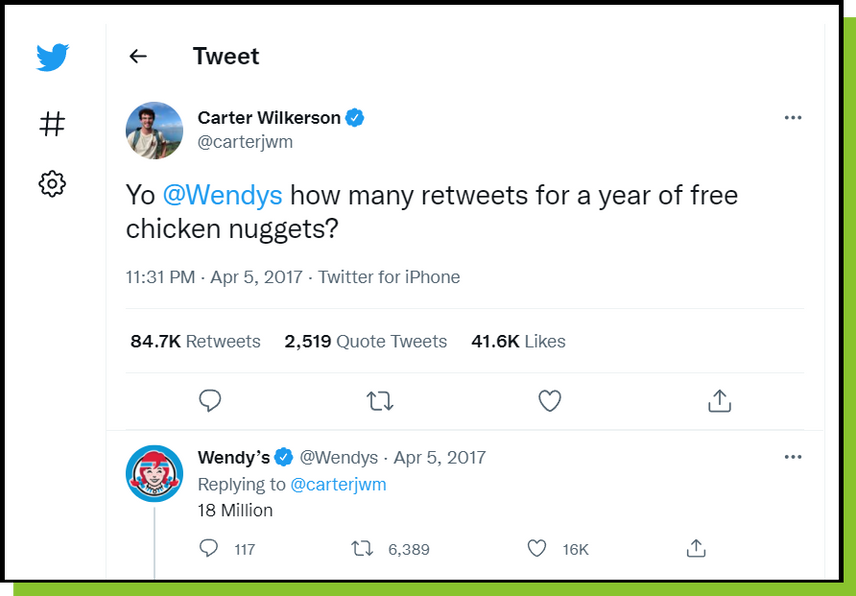
Dick’s Sporting Goods’ “Pro Tips” campaign
As gyms closed in response to COVID-19 and consumers shifted their workout routines to home, the eCommerce landscape for home fitness equipment saw a massive increase in competition. Prior to this massive consumer behavior shift, Dick’s Sporting Goods had already been working to provide value for their customers by building out their “Dick’s Pro Tips” content hub, which focuses on delivering content that answers common questions and search terms from customers. Looking to break through the noise of the now extremely crowded organic marketplace for at-home fitness (and increase rankings), Dick’s focused their content marketingContent Marketing
Content marketing is a marketing discipline with the goal of increasing awareness and scope for products and brands in the desired target group with content published on the web and offline.
Learn more efforts on fitness equipment through the hub.
Marketers at Dick’s worked quickly to build out content around trending searches like “best home workout equipment” and “how to choose an exercise bike” to meet their customers where they were in real-time: the first page of Google’s search results for their query. By partnering with Conductor, Dick’s was able to increase organic traffic to their “Dick’s Pro Tips” site and continue to build on this effective content marketing strategy through detailed keywordKeyword
A keyword is what users write into a search engine when they want to find something specific.
Learn more research, social listening, competitor analysis, and more.
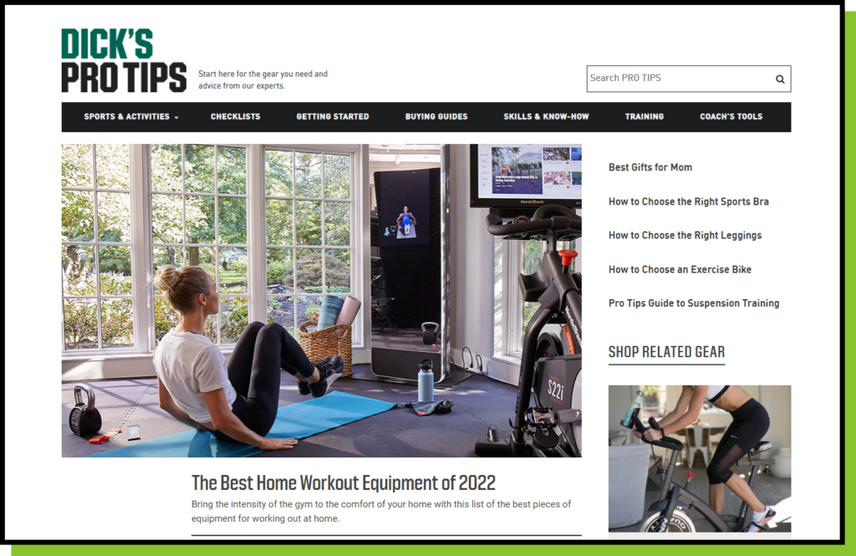
Namogoo’s “Left alone at the office” campaign
Real-time marketing is not just for interacting with consumers. It can also be an excellent resource for B2B marketers to inform and enhance relationships with their clients. Live events like conferences provide a fantastic opportunity to communicate with guests and potential customers in real-time. They allow you to generate buzz around your brand, provide attendees with valuable content, and build excitement for your brand, all in real-time.
Many companies will create an interactive experience at live events by streaming parts of a conference or offering guests the opportunity to submit questions via Twitter. This is a great way to create buzz around their brand and help guests and conference attendees feel more connected with their company. But at one eCommerce event called ShopTalk, the B2B startup Namogoo saw a unique and real-time opportunity to engage with those that did not make it to the event. They targeted businesses and employees who were "left alone in the office." This well-executed strategy enabled them to use an in-person event to connect with a segment of their audience that wasn't even in attendance.
Five strategies to drive real-time marketing success
Recognizing real-time marketing and seeing the benefits is only the first step. Follow these best practices to implement RTM into your enterprise marketing strategy successfully.
1. Get to know your audience
Knowing your audience is essential with RTM. You want to engage them personally, which means you need to understand who they are and what they’re interested in. Here is where the research aspect of real-time marketing begins. Get real-time marketing data by creating customer personas that detail your ideal client's demographics, interests, and lifestyle. Audience research can be conducted using technologies like Conductor’s Explorer, which provides the most up-to-date keyword and monthly search volumeSearch Volume
Search volume refers to the number of search queries for a specific keyword in search engines such as Google.
Learn more (MSV) data while enabling a deeper understanding of your audience through social, demographic, and sentiment insights.
You can also utilize tools like Facebook Audience Insights and Statista to gather additional big-picture information. Additionally, you can conduct surveys with your customer service and sales teams to better understand your audience's motivations, challenges, and pain points. What you learn can then be used to segment your real-time marketing campaigns, which can help you create better content and identify channels that are more likely to reach your target audience.
2. Social Listening & Monitoring
Once you have an idea of which platforms your audience uses, you need to find out what they are talking about. Social media listening is a way of monitoring conversations, keywords, and hashtags that can help you identify real-time trends and opportunities. It can be as simple as searching for relevant topics or employing more advanced tools like social listening software like TalkWalker that will automate the process, enabling you to respond to new opportunities as they occur.
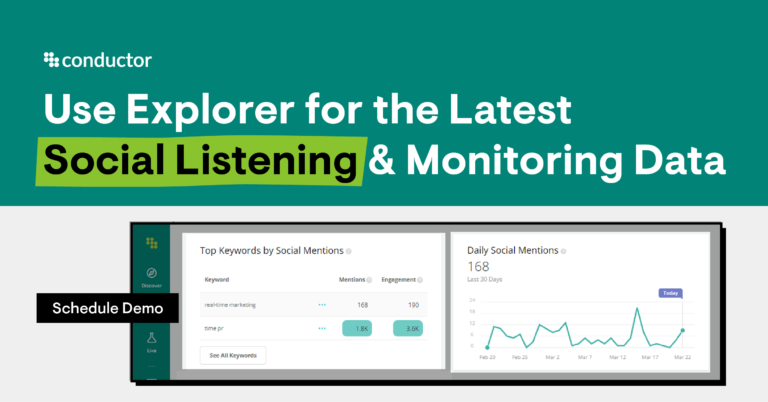
The most direct way of thinking about this is staying on top of trends. As everyone knows, being at the forefront of a trending topic, challenge, or hashtag is essential. It might seem obvious, but the other essential part of monitoring social media is responding authentically when your audience engages with you.
Consider the Wendy's example. A major opportunity could have been lost had they not reacted when they did. The momentum that real-time marketing creates means the right interaction at the right time can go viral. However, it also means people will move on quickly because there is always something new. A delayed response can mean missing out.
Authenticity can be tricky when it comes to real-time marketing campaigns. Consumers are quick to call out brands for joining a conversation they don’t belong in, but getting it right provides the chance to increase your organic reach exponentially. Take Starburst’s response to the resurgence of their Little Lad ad on TikTok in fall 2021. The #berriesandcream hashtag notched over 1B views on the streaming platform during peak candy season, with Halloween right around the corner. The brand saw the opportunity and responded quickly with new hashtags, a fresh jingle, and a Little Lad Halloween costume. As the originators of the 2007 jingle and ad, Starburst’s response was earned and, thus, authentic, which is what led to its success.
Don't forget how critical this is for B2B interactions as well. Businesses need to know you are listening to their needs as much as any consumer does, and often, their needs are much more developed and acute. More and more B2B marketers have dramatically shifted their focus from sales-driven to customer-led. Instead of anticipating needs and pushing specific products or services, they react to what they know their customers want or are engaging with right now. But to do that, they need to listen to what is in demand.
In both cases, a fast and authentic response not only allows you to provide quality customer service, but it encourages further interaction. Real-time marketing is all about creating a conversation. People are more likely to continue talking if they know someone is listening.
3. Keyword Research
Along with monitoring social media trends and topics, keyword research is an excellent resource to help you interact with your audience. Find keyword suggestions through Explorer in Conductor—the largest and most comprehensive keyword index in the industry—to get detailed insights into what people are talking about and how they are talking about them. Keep in mind that social media and search behavior can involve different terms and keywords, making it important to research both. That way, you can identify which terms and phrases your target audience prefers and ensure you use the right language to connect with them.
4. Align your KPIs
As with all marketing strategies, a successful RTM campaign relies on detailed data to help you see if what you are doing is working. Without meaningful KPIs, you will have difficulty determining which aspects of your efforts are worth continuing and which need to be reconsidered.
Whether you are a B2C or B2B company, without tracking KPIs, you are essentially left in the dark and leaving your success to guesswork. Your ability to make quality content and have positive interactions with your customers is only as good as your metrics are. If you are ready to start making the most of your content, you need accurate and real-time information. You can unlock powerful and timely content reports that track performance across your paid, earned, and owned channels by getting started with Conductor today. Connecting your marketing activities with your business metrics lets you see your successes, identify gaps in your strategy, and improve your ROIs. Because you can get real-time data across various performance indicators such as traffic and device use, Conductor is the perfect example of a platform that will help you manage RTM campaigns.
5. Have a content strategy
Content is an essential component of RTM, and it often comes down to striking a balance between timing and relevance. Real-time marketing happens fast, so having the right content at the right time can be the difference between a campaign that quickly fizzles out and one that explodes. This is where having a content strategy in place can be extremely helpful.
A content strategy for RTM should revolve around two key principles.
Plan content for an event or trend. Creating high-quality content takes time. That's why preparing well in advance of any real-time marketing campaign is essential. Of course, you can't always predict what kind of content you will need, particularly when you are reacting to real-time developments. But you can identify the potential scenarios ahead of time and plan your content creation accordingly. You can approach this by pinpointing trending topics or upcoming events and making specific content that can be used when needed.
For example, Oreo knew they were going to need content surrounding the Super Bowl, so they prepared well in advance and made sure to have a variety of content ready for the big day. This included preparing numerous unique pieces of content with real-time targeting capabilities. Did they know there would be a blackout? Of course not. But when it happened, they were ready with planned content ready to publish.
Create content that answers specific questions. Instead of only creating broad-based content, you can also focus on content that answers specific questions and helps you win on specific search engineSearch Engine
A search engine is a website through which users can search internet content.
Learn more result types, like People Also Ask. Think about the kind of information that your audience looks for and strategize accordingly. Create FAQs, how-tos, and listicles that can be instantly deployed based on real-time developments.
That way, when certain hashtags begin trending on social media, you can automatically create a post that answers specific questions pertaining to that topic. This can instantly drive engagement and increase your social reach.
Remember, an effective real-time marketing strategy ensures that you are ready when an opportunity arises, and having a solid content strategy can help marketers be proactive about being reactive.
Lasting results happen in real time
Timing is everything, and that's certainly the case with digital marketing. Enterprise marketing efforts such as SEO, CRM, content creation, social media, and community management require strategy, creativity, and consistency. That goes without saying. But today, it's also essential to approach those efforts with a real-time mindset.
Brands can connect and communicate with their customers through real-time marketing in fresh, relevant, and agile ways. It offers engagement that can promote without being inauthentic or too sales-driven. Real-time marketing has the power to make your content more pertinent, your campaigns more effective, and your brand more human. And considering how quickly things move, there is no time to waste getting started. Take the next step by scheduling a live demo with Conductor today, and see how you can improve your marketing strategy with real-time reports to stay agile and always timely.


